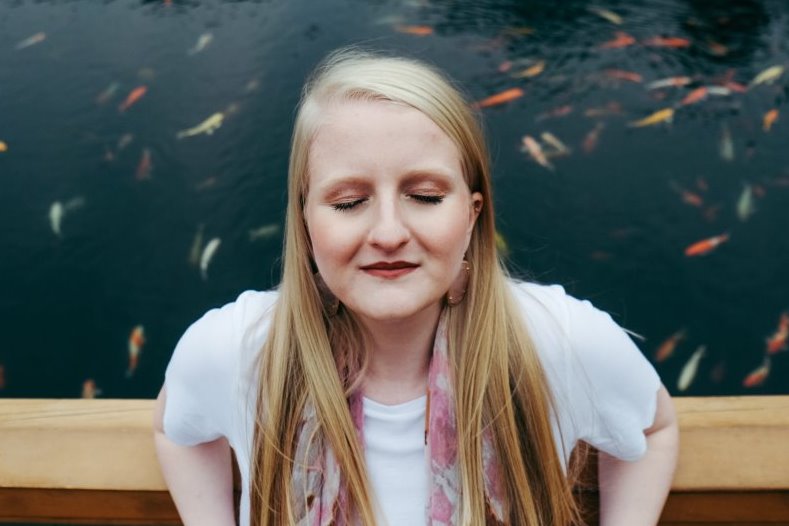Did you know reported levels of anxiety amongst children, adolescence and adults have been steadily and significantly rising since the 1950s?
The ABS report on mental health in 2007 found that 45%, (almost half of all Australians) would have met the criteria for a diagnosis of a mental disorder at some point in their life. The most common mental disorders reported were anxiety disorders.
Some common types of anxiety disorders:
♦ Generalised anxiety – You find yourself worrying constantly about everything in your personal and work life. You’re struggling to sleep and feel tense or restless all the time.
♦ Social anxiety – You avoid social events or situations, especially where you are the focus of attention. You fear being rejected or embarrassed. Symptoms include a pounding rapid heartbeat, sweating excessively, shaking, blushing and nausea.
♦ Panic attacks – These happen in response to stressful situations. Your heart races, you have pain in chest and you feel like you are losing control. You also might experience breathlessness, feel sweaty or faint.
♦ Agoraphobia – This is commonly understood as fear of ‘open spaces’. But avoiding these situations is often because you fear having a panic attack. This fear / anxiety is about being stuck in an environment you can’t escape from. Such as the large crowds at a concert, a lift or public transport.
♦ Obsessive compulsive disorder (OCD) – If you experience OCD then you will be using repetitive behaviours (compulsions) as a way of coping with the anxiety of unwanted thoughts and fears (obsessions). For example checking that the house has been locked 10 times.
♦ Post-traumatic stress disorder (PTSD) – In traumatic situations your body goes into ‘fight or flight’ to protect you. When the event has passed the body should return to its rested state, but with PTSD the memories and anxiety continue to affect your capacity to function in daily life. This sometimes develops after experiencing or witnessing a traumatic event. Such as serious injury, death, physical or sexual violence, natural disaster or living in a war zone.
So, what is Mindfulness?
Mindfulness is intentionally bringing your awareness to the ‘present’ moment, without responding or reacting to anything that arises, whether it is good or bad, happy or sad. Thoughts, feelings and sensations are not pushed away, pushed down, or in contrast, held so tightly it consumes every waking moment.
Instead mindfulness recognises thoughts as just thoughts, “they do not define you’.
We all have random, painful, crazy and sometimes distressing thoughts. But they are just thoughts. So thoughts are gently acknowledged and allowed to move on through. Creating space where calmness and peace can grow.
Bodhipaksa from Wildmind explains how the mind will wander through all sorts of thoughts if left to itself — including thoughts expressing anger, craving, depression, revenge, self-pity, etc. Suffering, such as anxiety is only experienced when we indulge and entertain these thoughts.
Also, you may have noticed that these thoughts are not useful in any way!
They are usually about the past – which no longer exists, or the future – just a fantasy until it happens.
The one moment we actually can experience, the present moment. Is the one we seem most to avoid. ~ Bodhipaksa
Mindfulness for anxiety disorders?
Have you heard of the plasticity of the brain? It means your brain has the ability to keep changing. It doesn’t have stay stuck at any stage of life. When you use mindfulness for anxiety it is essentially rewiring the brain. What can be learned, can be unlearned. (Click to Tweet)
Mindfulness is the simple practice of bringing your attention / awareness to one thing, most commonly your breathe. Just noticing your breathe – your tummy inflating as you breathe deeply and slowly in, and noticing it deflate as you slowly and calmly exhale. Noticing how it feels as your lungs fill, the coldness of the air as you breathe in through your nose, and the warmth of your breathe as you slowly exhale.
The mind will inevitably wander away at times. This is to be expected. It’s normal. You just gently notice this and bring your attention back to your breathe.
This process of bringing your attention back to your breathe begins the process of rewiring your brain! The simple practice of noticing…
♥ Old neural pathways are calmed, and new neural pathways are developed.
♥ Your brain is less reactive, your thinking is clearer, and your body is less affected by stress.
♥ External events don’t undo you like they used to.
♥ Life is more filled with meaning, satisfaction and peace.
In today’s rush, we all think too much…and forget about the joy of just being. ~ Eckhart Tolle
Anxiety disorders can steal your freedom and joy in life. But it doesn’t have to be this way. You can make simple changes and get your life back. Mindfulness is your way forward!
Lets Talk
If an anxiety disorder is reducing the quality of your life, then please call me for a Free 15 minute consultation. We can talk about what is going on for you and I can answer any questions you might have. If I am with a client I will get back to you as soon as I can.
Lets Talk
If anxiety is reducing the quality of your life, then please call me for a Free 15 minute consultation. We can talk about what is going on for you and I can answer any questions you might have. If I am with a client I will get back to you as soon as I can.
or if you are ready to book now




